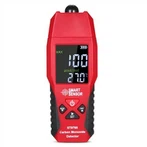How to measure the power loss of switching power supply with digital oscilloscope
The new architecture of SMPS:Switch Mode PowerSupply) needs to provide high current and low voltage to processors with high data speed and GHz class, which adds invisible new pressure to power device designers in terms of efficiency, power density, reliability and cost. In order to take these requirements into account in the design, designers have adopted new architectures such as synchronous rectification technology, active power filter correction and increasing switching frequency. These technologies also bring some higher challenges, such as high power loss, heat dissipation and excessive EMI/EMC on switching devices.
During the transition from "off" (on) to "on" (off) state, the power supply device will have high power consumption. (However, the power loss of switching devices in the "on" or "off" state is less, because the current through the device or the voltage on the device is very small). Inductors and transformers can isolate the output voltage and smooth the load current. Inductors and transformers are also susceptible to switching frequency, resulting in power dissipation and occasional failures due to saturation.
Because the power dissipated in the switching power supply device determines the overall efficiency of the thermal effect of the power supply, it is very important to measure the power loss of the switching device and inductor/transformer. This measurement can determine power efficiency and heat dissipation.
Measurement and analysis of power loss
1. Test device required for power loss measurement
Simplified circuit of switch transformation. The MOSFET field effect power transistor controls the current under the excitation of 40kHz clock. MOSFET is not connected to AC feeder ground or circuit output ground, that is, it is isolated from ground. Therefore, it is impossible to simply measure the grounding reference voltage with an oscilloscope, because if the grounding wire of the probe is connected to any terminal of the MOSFET, the point will be short-circuited with the ground through the oscilloscope.
In this case, differential measurement is a good way to measure the voltage waveform of M0SFET. By differential measurement, you can measure VDS, that is, the voltage on the drain terminal and the source terminal of MOSFET. VDS can float above the voltage, and the voltage range can be tens of volts to hundreds of volts, depending on the voltage range of the power supply device. You can measure VDS in several ways:
Chassis ground wire of suspension oscilloscope. It is recommended not to use it, because it is extremely harmful to the user, the device under test and the oscilloscope.
Two conventional single-ended passive probes are used to connect their grounding wires together, and then the channel calculation function of oscilloscope is used to measure. This measurement method is called quasi-differential measurement. However, although the passive probe can be used in combination with the amplifier of an oscilloscope, it lacks the function of "common mode rejection ratio" (CMRR) which can properly block any common mode voltage. This setting cannot accurately measure the voltage, but the existing probe can be used.
Use the probe isolator available in the store to isolate the oscilloscope chassis from the ground. The grounding wire of the probe will no longer be the main grounding potential, and the probe can be directly connected to a test point. Probe isolator is an effective solution, but it is expensive, and its cost is two to five times that of differential probe.
Using real differential probe on broadband oscilloscope. You can measure VDS by differential probe, which is also a good method.
When measuring current through MOSFET, first clamp the current probe, and then fine-tune the measuring system. Many differential probes are equipped with built-in DC offset trimming capacitors. Turn off the tested equipment, and after the oscilloscope and probe are fully warmed up, you can set the average value of voltage and current waveforms measured by the oscilloscope. Sensitivity setting should use the values used in actual measurement. In the absence of signal, adjust the trimming capacitor to adjust the zero average of each waveform to 0 V. This step can greatly reduce the measurement error caused by the static voltage and current in the measurement system.






